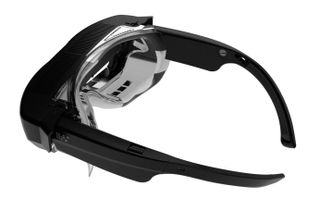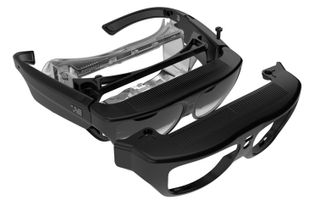Rugged AR: ODG's R-7HL Hazardous Location Certified Smart Glasses

ODG revealed a ruggedized version of the company’s R-7 Smart Glasses, the R-7HL, that meets international safety standards for ballistics protection, explosion prevention, dust proofing, chemical splash protection, and general ruggedness.
ODG is entering the consumer AR market later this year with its R-8 Smart Glasses, but that’s not where the company's bread and butter comes from. ODG exists primarily to serve military and industrial clients.
ODG, otherwise known as Osterhout Design Group, is an old dog in the AR business. The company’s founder, Ralph Osterhout, started working with HMD technology in the 1980s when he designed night vision goggles for military applications and heads-up displays (HUDs) for scuba masks. Osterhout founded ODG in 1999, and in 2008 the company started building smart glasses devices for military and industrial needs.

The ODG R-7 Smart Glasses are the company’s current industrial-grade AR product. They provide several advantages for industrial applications such as repair, order picking, medical applications, and more.
The R-7 offers four primary use cases: ODG said that Telepresence is the dominant use of the smart glasses, and many clients use them for remote expert assistance with repairs and troubleshooting using software such as Scope AR’s Worklink. They also let you view how-to and training videos on location, which can help reduce training time and improve productivity and accuracy. ODG calls that feature Assist Reality. (Get it? It's another "AR.") The R-7 Smart Glasses also offer Augmented Reality capabilities to blend digital content with real-world surroundings, and HUD capabilities so you can view pertinent data in a hands-free setting.
ODG’s smart glasses have numerous potential applications, but the company found that many of its current and potential customers requested a device that meets specialized durability and safety standards so that they could take advantage of AR capabilities in hazardous locations.
Although the existing iteration of the R-7 glasses is compelling, their usefulness is limited to the environments in which they can survive. For example, a person repairing gas pipes could probably benefit from a 3D repair schematic, or a heads-up display with temperature warning and other data, but you can’t bring standard smart glasses into an environment that poses a risk of explosion. Similarly, a scientist working with liquid chemicals could use a heads-up display for complex mixture instructions, but you need specialized safety glasses to work with such substances. And imagine what a machinist could do with an augmented reality overlay to help guide their work, but you need safety glasses rated for ballistics to operate such machinery.
Stay on the Cutting Edge
Join the experts who read Tom's Hardware for the inside track on enthusiast PC tech news — and have for over 25 years. We'll send breaking news and in-depth reviews of CPUs, GPUs, AI, maker hardware and more straight to your inbox.
You get the idea. ODG recognized the potential use of a ruggedized set of smart glasses and used its experience designing products for the military to redesign the R-7 Smartglasses for hazardous environments.
ODG R-7HL Smartglasses
The ODG R-7HL (Hazardous Location) Smart Glasses meet several industry safety and durability standards, including Military Standard 810G certification for drop, shock, vibration, low pressure, and temperature extremes, which means you would have a hard time breaking them if you tried. The R-7HL Smartglasses also meet the requirements for ANSI Z87.1 dustproof and splashproof certification, which means you can use them the laboratory. ODG also took great effort to ensure that the electronics meet certifications for use in explosive atmosphere environments.

The R-7HL Smart Glasses offer the exact same capabilities as the standard edition. You get the same 2.7GHz quad-core Snapdragon 805 processor, 3GB of LP-DDR3 RAM, 64GB of internal storage, and dual 80Hz 720p stereoscopic transparent displays. ODG raised the price of the ruggedized device instead of reducing its capabilities; ODG sells the standard R-7 Smart Glasses for $2,750 per pair, but the company is asking $3,500 for each pair of R-7HL Smart Glasses.
Kevin Carbotte is a contributing writer for Tom's Hardware who primarily covers VR and AR hardware. He has been writing for us for more than four years.
-
problematiq I am waiting for 3D architectural blueprints to be made and for contractors to be able to use the AR glasses to build the building according to design.Reply -
bit_user I don't care about anything AR that's not true 3D and doesn't support a standard API (like Google Tango or MS' Hololens).Reply
IMO, a heads-up display doesn't qualify something as AR. These are just smart glasses. -
TeamColeINC Nice, I imagine using these for an AR HUD while playing airsoft lol. (Could be used for LE/Mil purposes too)Reply
Most Popular

